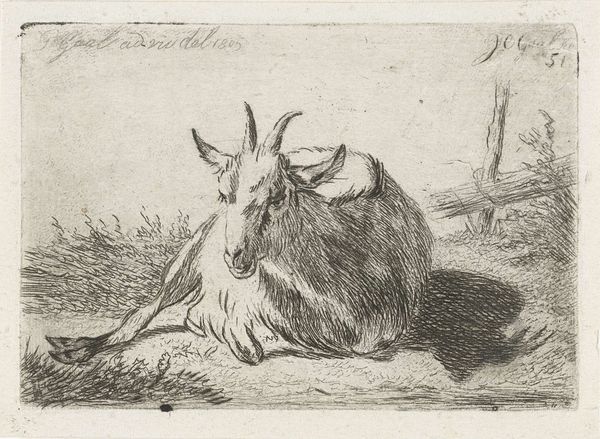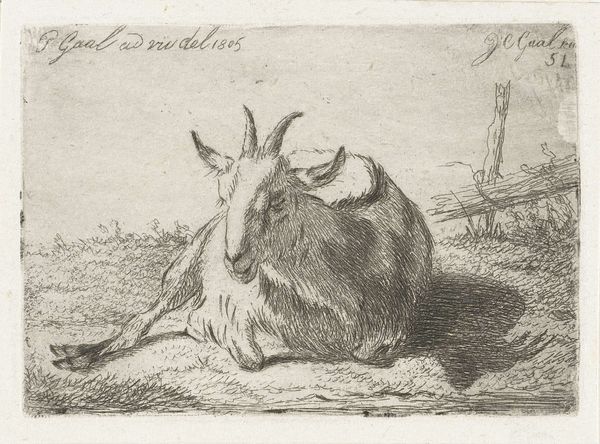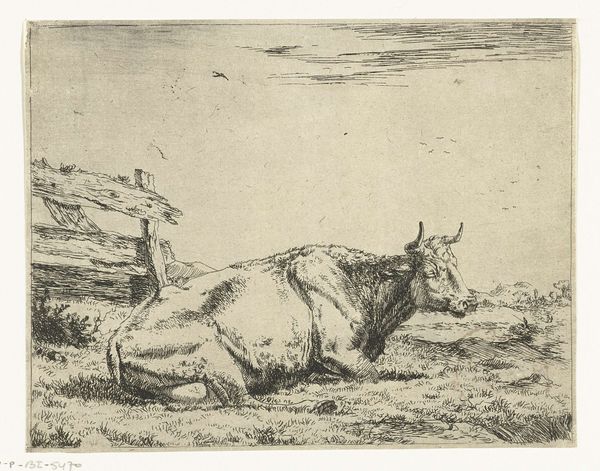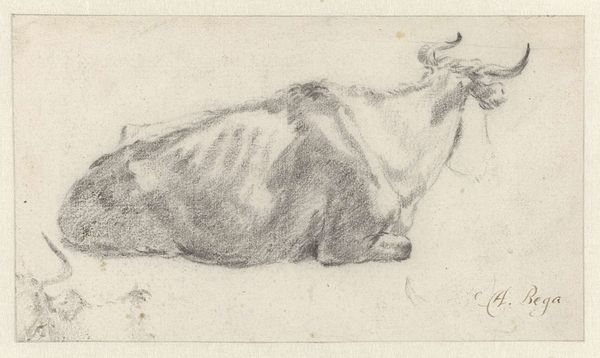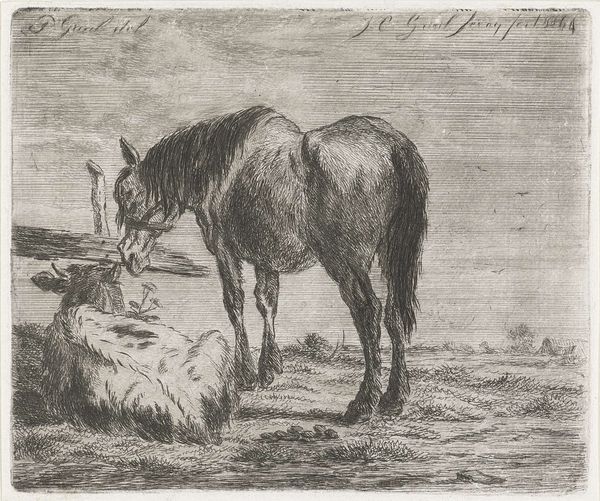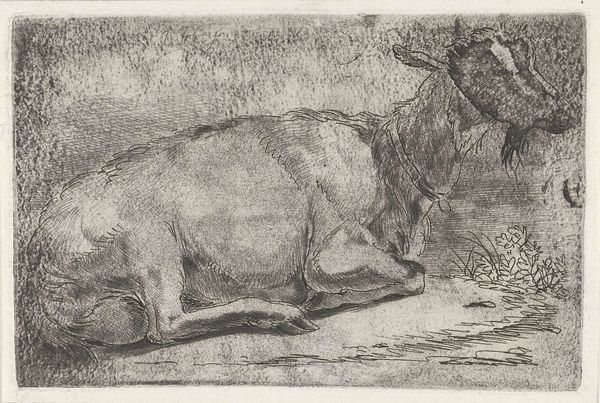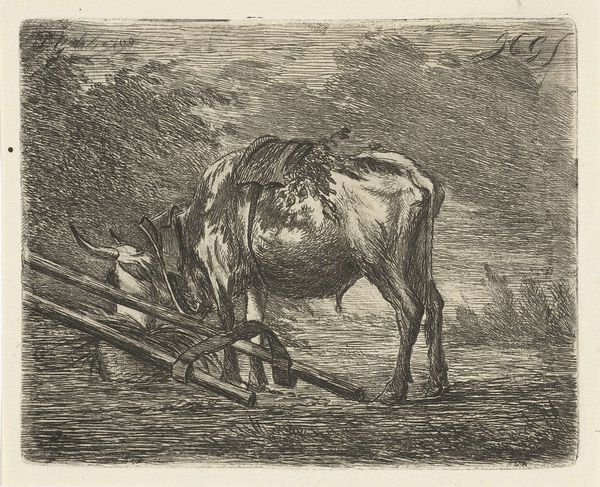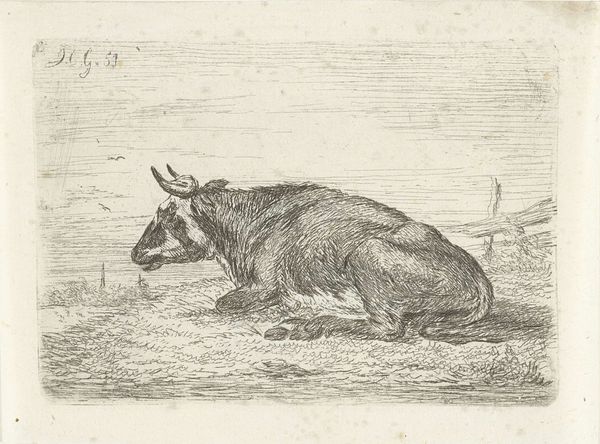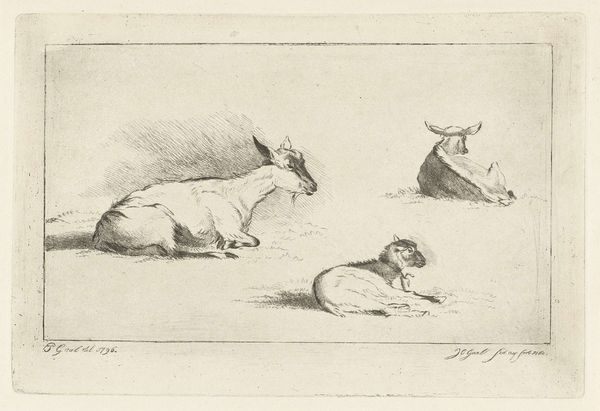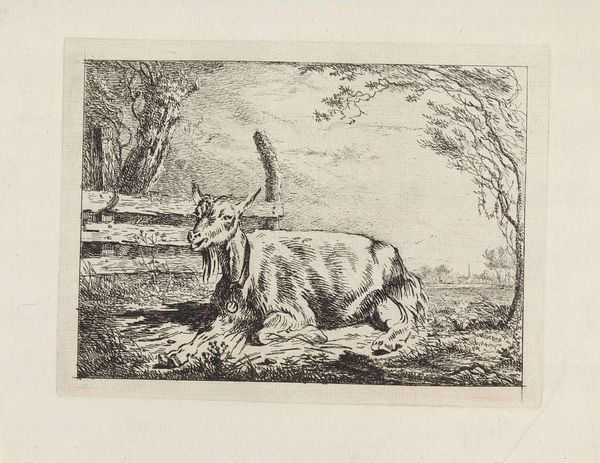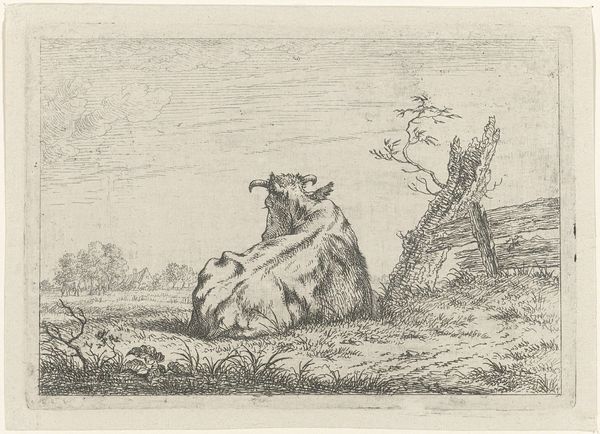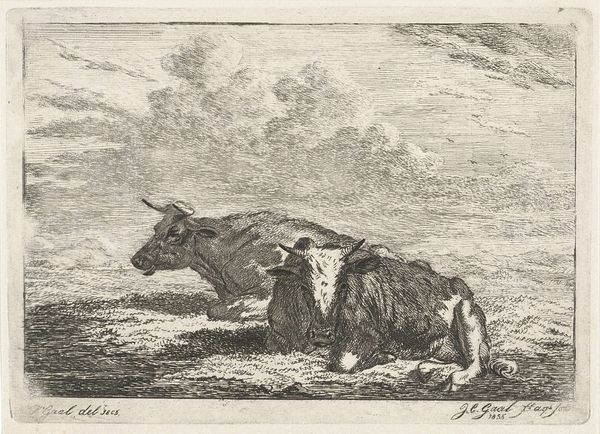
drawing, paper, ink
#
portrait
#
drawing
#
animal
#
landscape
#
paper
#
ink
#
pencil drawing
#
folk-art
#
genre-painting
#
realism
Dimensions: height 55 mm, width 80 mm
Copyright: Rijks Museum: Open Domain
Jacobus Cornelis Gaal created this etching of a reclining goat in the Netherlands in the mid-19th century. The image's apparent simplicity belies the complex relationship between art, nature, and the social order during this period. Landscape art in the Netherlands had long been tied to national identity, reflecting the country’s geography, agricultural practices, and sense of place. Artists often found ways of representing the country's rural character in their work. Gaal, working within this tradition, presents us with a seemingly straightforward depiction of a common farm animal. But what does it mean to elevate the everyday into the realm of art? Is this a celebration of rural life, or is it simply an exercise in artistic skill? To truly understand this image, we can research the economic and social conditions of 19th-century Netherlands, looking into the role of agriculture and the changing relationship between urban and rural communities. Historical societies and local archives can provide invaluable insights. By understanding the context in which Gaal was working, we can begin to appreciate the subtle ways in which art reflects and shapes our understanding of the world.
Comments
No comments
Be the first to comment and join the conversation on the ultimate creative platform.
